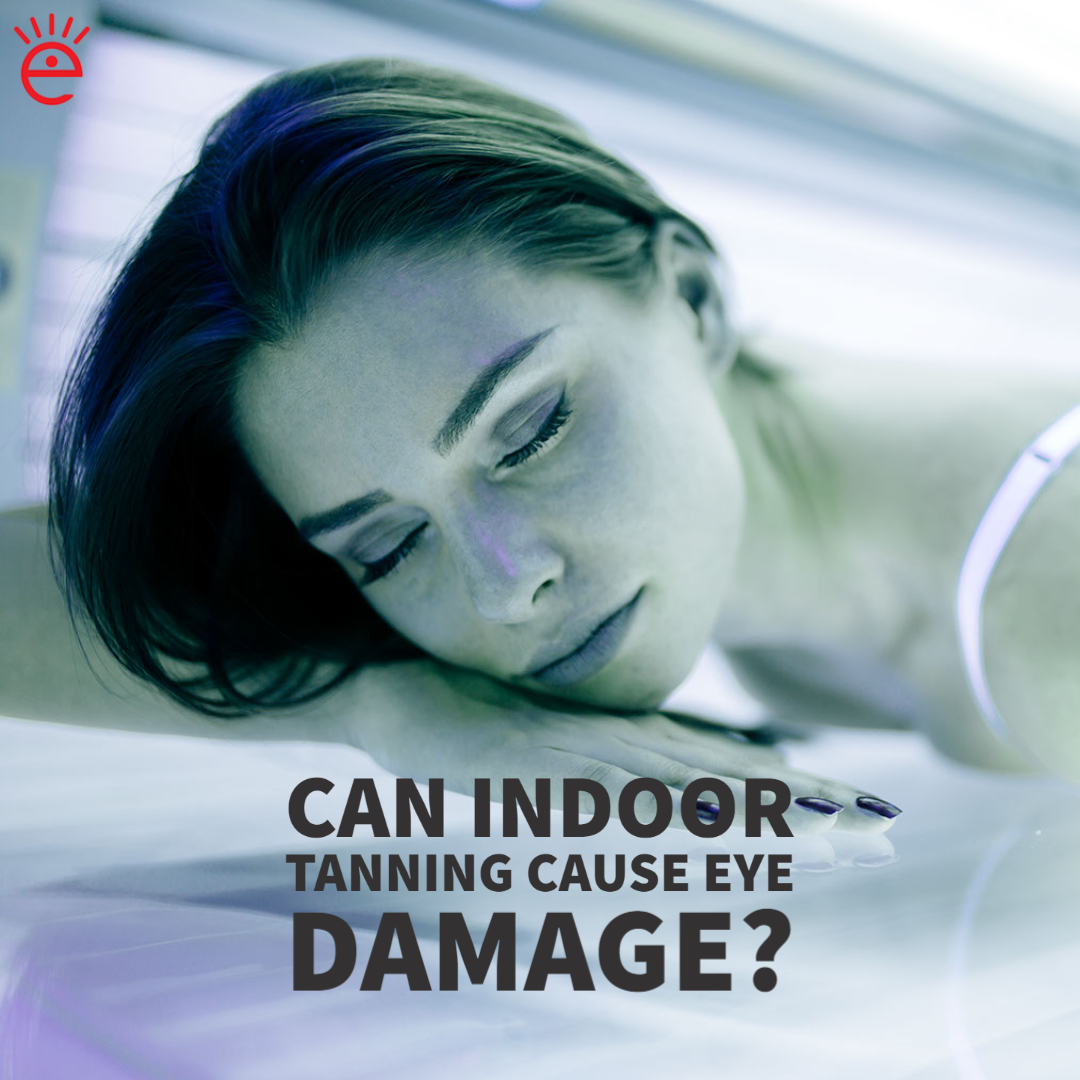The votes are in. The World Health Organization (WHO) classifies the solar radiation emanating from tanning beds as a Group 1 carcinogenic agent. A “carcinogen” is defined as an agent with the capacity to cause cancer in humans. Indoor tanning beds have also been recently proven to cause direct damage to the eye by causing undetectable microstructural changes affecting the cornea. Surprisingly, many indoor tanning salons still insist that indoor tanning is a healthy alternative to absorbing the sun’s direct rays. In 2012, the U.S. House Energy and Commerce Committee conducted an investigation to determine whether tanning salons provided accurate information regarding the health risks of indoor tanning. As you may have surmised, the salons were less than forthcoming. So, where are you supposed to get your Eye Health vs. Indoor Tanning information? You can start with the Eye Wares blog!
How Does UV Exposure Cause Eye Damage?
One common misconception about indoor tanning is that the light is less harmful than direct UV rays from sunlight. According to a recent congressional report, UVA (a variety of ultraviolet light from sunlamps) can actually be 10-15 times more powerful than the sun at midday. The obvious conclusion is that this light poses a serious risk to your skin. But it can also cause damage to your eyes and eyelids. The following are eye health risks associated with indoor tanning:
- Cataracts. UV damage to the eyes can be immediate as well as cumulative. One possible symptom of overexposure to UV rays is the development of cataracts. This is typically an age-related degenerative condition, but UV exposure in a tanning bed can rapidly accelerate the process.
- Photokeratitis. This temporary eye condition is caused by too much exposure to UV rays. It is similar to a sunburn, except it affects your corneas rather than your skin. It is painful and inconvenient and can temporarily damage your cornea.
- Melanoma. Exposure to UV rays from the sun and tanning beds may increase your risk of developing melanoma around the eye. In fact, according to the American Academy of Dermatology Association (AAD), a single indoor tanning session can increase your risk of developing skin cancer by 20%.
How Much do Tanning Goggles Protect Your Eyes?
Many tanners assume that simply closing their eyes will defend their defenseless corneas from the barrage of UV rays. Unfortunately, the skin of your eyelids is incredibly delicate and sensitive, so it does little to protect your eyes from harmful UV damage.
If you choose to use a tanning bed, make sure to only use the goggles specifically designed to protect your eyes during indoor tanning. Sunglasses, towels, and other eye coverings will not be nearly as effective or safe as tanning goggles.
Why Aren’t Sunglasses as Effective in an Indoor Tanning Bed?
Tanning beds can produce UV levels up to 100 times what you might receive from the sun, which is why even a pair of sunglasses designed for UV protection can be ineffective against the light in a tanning bed. However, sunglasses can be extremely efficient defensive eyewear when protecting your eyes against the sun’s rays. When shopping for sunglasses, try to find eye protection rated UV400 or above. This means they will block approximately 99.9% of UV rays!
Healthy Eyes Take Priority Over Tanned Skin!
It’s true that tans are all the rage. But it is a medical fact that tanning, indoors or outdoors, makes your skin age more rapidly and puts you at risk for a whole host of health conditions! Protect your eye health by wearing eyewear with UV protection and avoiding indoor tanning salons.
Have You Been Tanning? Visit Eye Wares for Your Next Eye Exam!
Have you been tanning recently? Maybe it’s just time for your annual eye exam! For all of your eye health, vision, and eyewear needs, visit Eye Wares in Metairie and Mandeville! Schedule your appointment online, in person, or over the phone.


